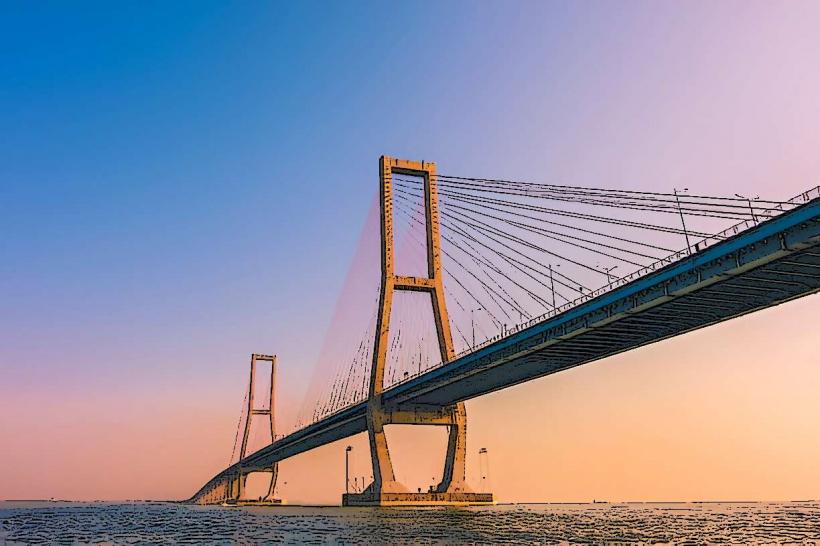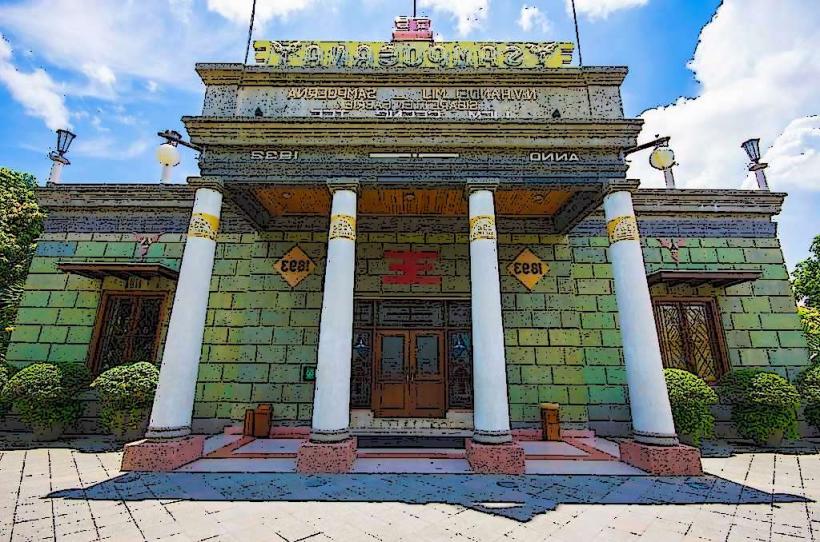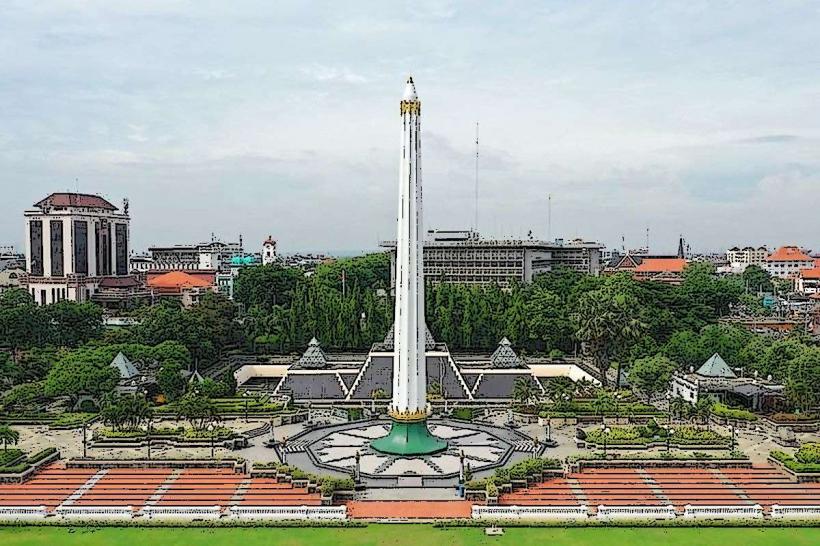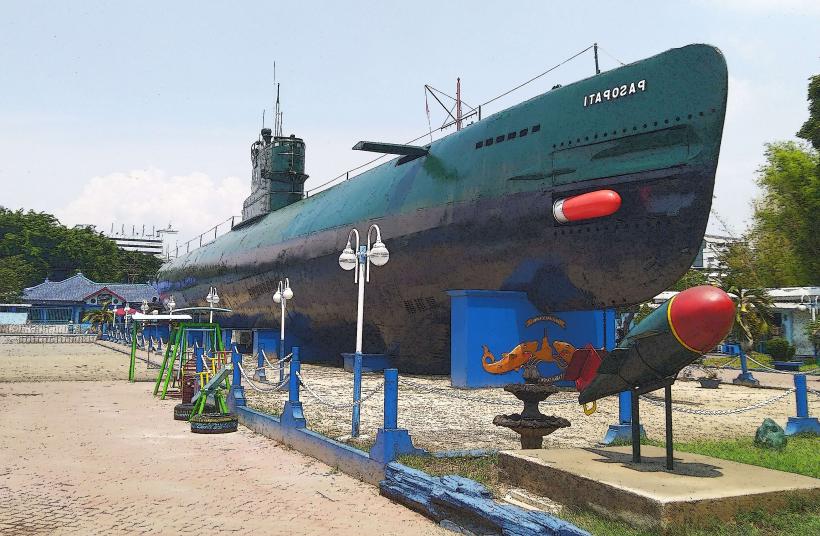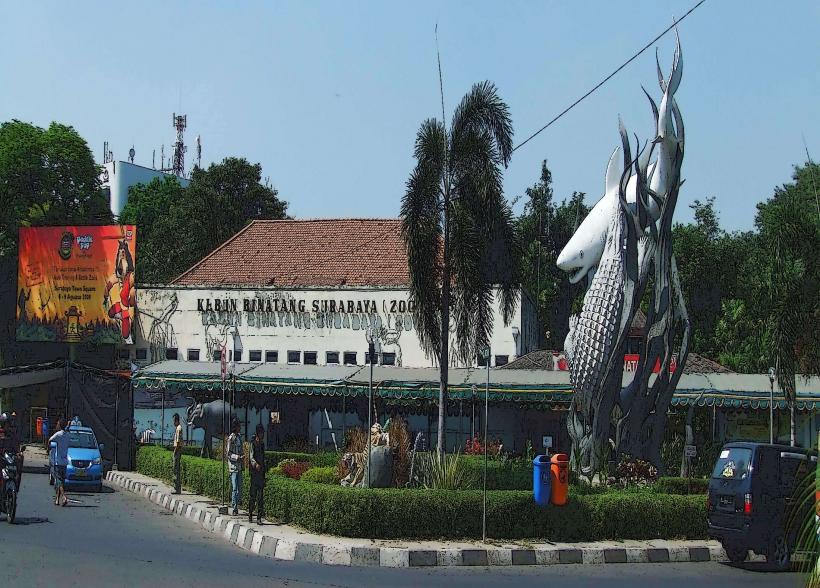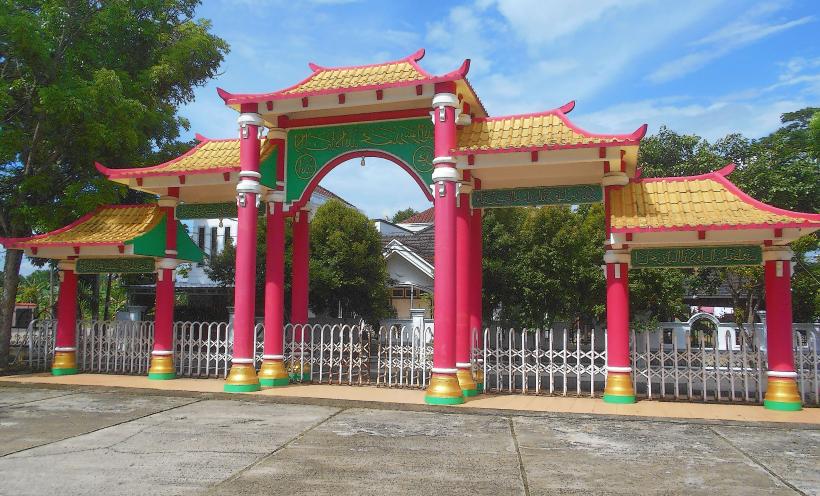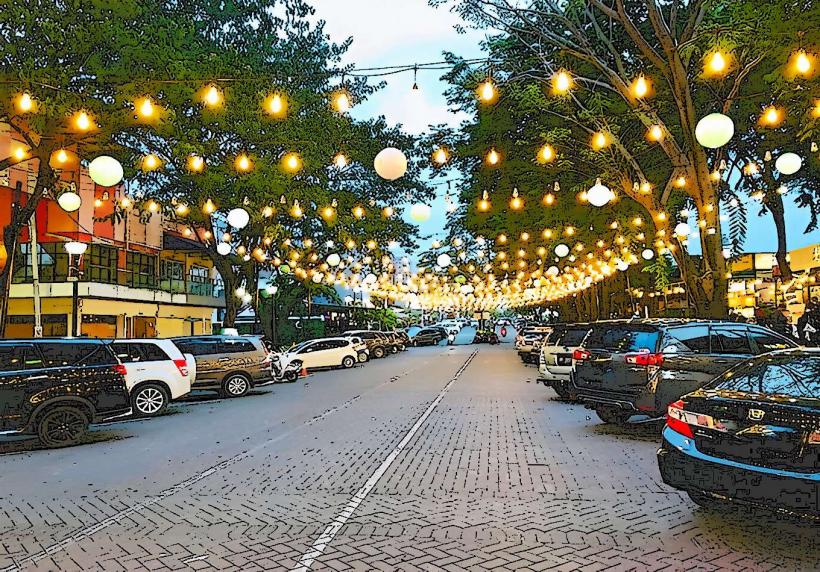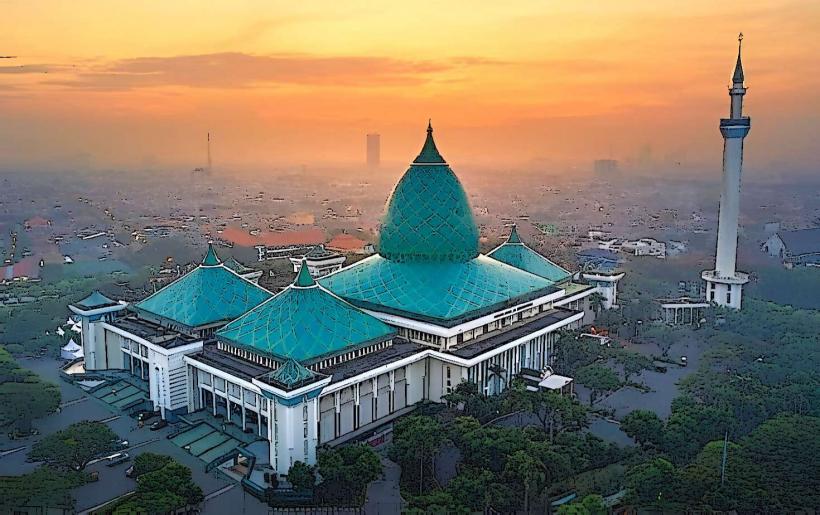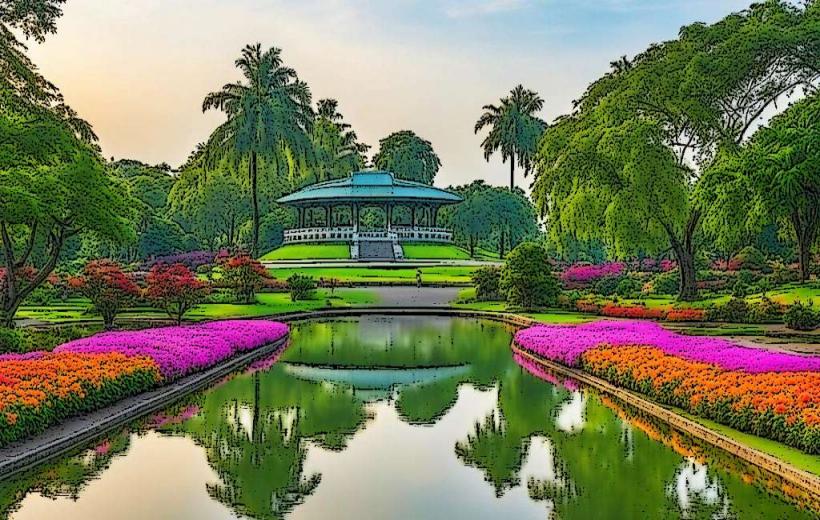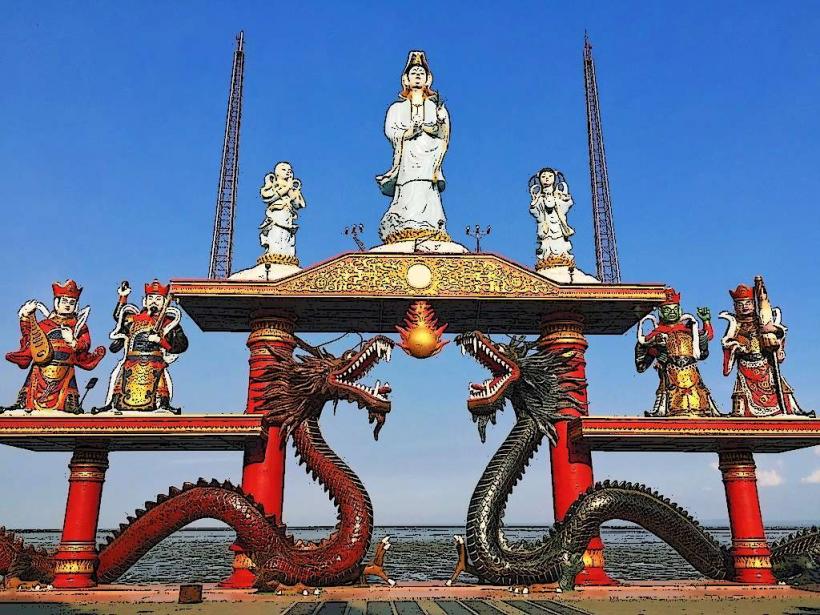Information
City: SurabayaCountry: Indonesia
Continent: Asia
Surabaya, Indonesia, Asia
Overview
Mind you, Surabaya, the second-largest city in Indonesia, serves as East Java’s capital and hums with life-its streets lined with food stalls, its history deep, and its economy thriving, likewise here’s a closer peek at Surabaya-its geography and climate.The city sits on Java’s northeastern coast, right beside the calm, blue waters of the Madura Strait, consequently surabaya is the gateway to East Java and the islands farther east, stretching across about 350 square kilometers-roughly the size of a compact county-and its tropical wet-and-dry climate keeps the air warm, from a mild 25°C at dawn to a sweltering 34°C by mid-afternoon.From May to October, the land stays parched under the dry season; come November, the rains return and last until April, along with surabaya’s past runs deep-it shaped much of Indonesia’s growth.Its very name blends two Javanese words: sura, meaning shark, and baya, meaning crocodile-creatures that stand for strength and resilience, likewise you can behold it in the city’s famous statue of a shark locked in battle with a crocodile.As far back as the 14th century, during the Majapahit Empire, Surabaya thrived as a bustling port, its docks crowded with traders from China, India, and Arabia, as well as later, under Dutch rule, it grew into a vital economic and military stronghold.Tanjung Perak, the city’s port, grew into one of Southeast Asia’s busiest, with ships crowding its docks, not only that surabaya itself became a key stronghold in Indonesia’s fight for independence.Surabaya, often called the “City of Heroes” (Kota Pahlawan), earned its name during the 1945 Battle of Surabaya, when locals fought fiercely against British and Dutch troops-streets echoed with gunfire and shouted orders, as well as today, the city’s character reflects a rich mix of Javanese, Chinese, Arab, and Dutch influences.You can glimpse this diversity in the city’s ornate mosques, fragrant spice markets, and colorful festivals, as it welcomes Muslims, Christians, Buddhists, and Hindus living side by side, what’s more the city’s dotted with temples, mosques, and churches that reflect its rich mix of cultures, slightly often If I’m being honest, People mostly speak Javanese here-specifically the Surabayan dialect, sharp and straightforward compared to the softer tones heard elsewhere, not only that indonesian is the main language for government and business, but in Surabaya you’ll also hear it in bustling markets and busy streets.Truthfully, The city blends history, culture, and modern life, with the towering 41‑meter Heroes Monument honoring those who fought in the Battle of Surabaya, meanwhile next to it, a museum shares stories of Indonesia’s struggle for independence, while the House of Sampoerna-set inside a beautifully preserved Dutch colonial building-traces the history of the Sampoerna cigarette company and the craft of hand-rolling fragrant kretek.The Suramadu Bridge stretches 5.4 kilometers across the water, linking Surabaya to Madura Island, and the 15th-century Ampel Mosque, built by Sunan Ampel, stands as a sacred landmark in the heart of the Arab Quarter, not only that visitors can admire the Cheng Hoo Mosque’s graceful blend of Chinese and Islamic design, wander through the lively Kya-Kya Chinatown with its sizzling food stalls and ornate temples, or explore Tunjungan Plaza’s sprawling mix of luxury shops, cafés, and entertainment.Families cool off at Ciputra Waterpark, while nature lovers head to Kenjeran Beach for salty breezes and Madura Strait views or drift through the serene Mangrove Eco Park, listening to the rustle of leaves and bird calls, alternatively all of it leads back to Surabaya’s greatest invitation-its bold, savory flavors.In Surabaya, you can savor Rujak Cingur, a tangy-sweet salad of fresh fruit, crisp vegetables, and tender slices of cooked cow’s snout topped with spicy peanut sauce; warm up with Soto Ayam Lamongan, a golden turmeric chicken soup from nearby Lamongan; try Rawon, a deep, almost black beef stew flavored with earthy keluak nuts; or dig into Lontong Balap, a hearty mix of rice cakes, bean sprouts, tofu, and savory broth, often served with satay and a dab of fiery chili paste; for a light bite, crunch on krupuk udang-prawn crackers that snap and melt in seconds, simultaneously as one of Indonesia’s economic powerhouses, the city thrives as a bustling port through Tanjung Perak, home to shipbuilding, manufacturing, electronics, and food processing, and as a hub for markets, malls, and modern business districts.It’s also gaining ground in education and technology, with universities, research centers, and startups shaping its future-led by Airlangga University, Institut Teknologi Sepuluh Nopember, and Petra Christian University, subsequently getting around is easy, thanks to Juanda International Airport’s busy domestic and international routes, city buses, angkot minibuses, and ride-hailing services like Gojek and Grab.Surabaya is building a mass rapid transit system, while its busy rail hub links travelers to Jakarta, Bandung, and Yogyakarta, and ferries from Tanjung Perak Port carry them to Bali or Kalimantan; yet the city’s rapid growth brings traffic jams, smog, sprawling suburbs, seasonal floods that leave streets slick and ankle-deep in water, and ongoing struggles to manage waste, all within a vibrant city that blends rich history with modern ambition, to boot called the “City of Heroes,” it stands tall, a living emblem of Indonesia’s grit and unbreakable spirit, much like a flag whipping in the wind after a hard-fought victory.Surabaya, with its deep-rooted traditions, bustling markets, and steadily modernizing streets, remains a key force shaping Indonesia’s growth and sense of self.
Author: Tourist Landmarks
Date: 2025-10-29
Landmarks in surabaya

